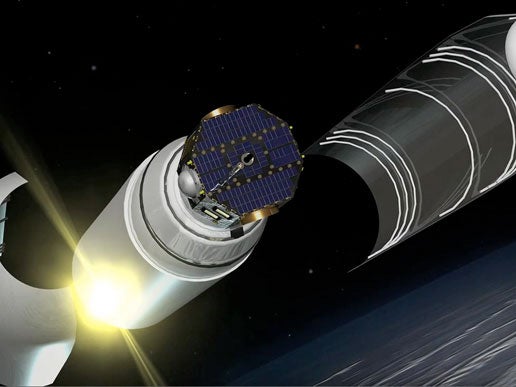The IBEX spacecraft, which launched in 2008, uses energetic neutral atom imaging to examine how our heliosphere, the “bubble” in which our Sun and planets reside, interacts with interstellar space, the environment outside of the heliosphere. IBEX created the first global maps showing these interactions and how they change over time. IBEX also directly measures interstellar neutral atoms flowing into the solar system.
“Over the past six years, this fundamental work focused on our place in the solar system has become the gold standard for understanding our Sun, our heliosphere, and the interstellar environment around us,” said David McComas from SwRI.
Eight papers highlight the interstellar helium measurements taken by IBEX and NASA’s Ulysses spacecraft, the only two spacecraft to have directly measured the local interstellar flow of these helium atoms. The studies resolved an inconsistency in the direction and temperature of the interstellar flow in the data gathered by Ulysses compared to those taken by IBEX. Both data sets now confirm that the local interstellar flow is significantly hotter than believed previously from the Ulysses observations alone and provide a great deal of insight into the direction the heliosphere is moving through the local material in the galaxy, as well as how fast it is traveling.
Two papers examine aspects of determining the composition of interstellar particles, looking closely at oxygen, helium, and neon, as well as how those and other particles are effectively measured. The final four papers discuss analysis techniques and related theoretical considerations, such as the effects of radiation pressure and how planetary gravity affects the course of neutral atoms as they travel through the heliosphere.
“Collectively, these studies, along with previously published papers related to the IBEX interstellar neutral observations, open a completely new window on the local interstellar environment, its composition, its properties, and the likely processes at work in the interstellar space around the Sun and in the heliospheric boundary region,” said McComas.
Initially a two-year mission, funding for IBEX has been extended through 2017, with the potential for mission extensions well beyond that. The latest National Research Council Decadal Survey on Heliophysics emphasizes the urgent need for additional research in this area. One concept for a follow-on mission is the Interstellar Mapping and Acceleration Probe (IMAP), which the Decadal Survey recommended as an approximately half-billion-dollar, principal investigator-led mission for the NASA Solar Terrestrial Probes line. IMAP would use a combination of significantly higher resolution and sensitivity to build on the fundamental groundwork laid by IBEX.










